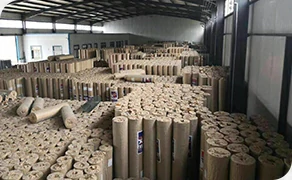 TEL:
+86-13102802206
TEL:
+86-13102802206
 Email:
fencenetting@china.com
Email:
fencenetting@china.com
 Language
Language
 TEL:
+86-13102802206
TEL:
+86-13102802206
 Email:
fencenetting@china.com
Email:
fencenetting@china.com
 Language
Language


The Importance of Construction Fence Panels A Comprehensive Guide
In the bustling world of construction, safety, security, and organization are paramount. One often-overlooked component that plays a critical role in maintaining these elements is the construction fence panel. These panels not only delineate work zones but also protect the public and workers alike. Understanding the importance, types, and benefits of construction fence panels can significantly enhance safety protocols on any construction site.
What Are Construction Fence Panels?
Construction fence panels are temporary physical barriers set up around construction sites to prevent unauthorized access and to provide a clear boundary for the construction area. Typically made from durable materials such as steel or galvanized metal, these panels are designed to withstand harsh weather conditions and resist vandalism. The height of these panels usually ranges from 6 to 8 feet, making them effective in keeping out people and small animals.
Key Benefits of Construction Fence Panels
1. Safety and Security The primary role of construction fence panels is to secure the construction site. By erecting these barriers, construction companies can protect their workers, equipment, and materials from theft or vandalism. This is particularly crucial in urban settings where construction sites are often exposed to public spaces.
2. Public Protection Construction sites can pose various hazards to the public, from falling debris to heavy machinery in operation. Fence panels act as a barrier, minimizing the risk that members of the public may inadvertently walk into a dangerous area. This not only protects the public but also shields the construction company from liability concerns.
3. Site Organization Clear boundaries are essential for efficient project management. Construction fence panels help to keep the work area organized, ensuring that materials, equipment, and workers are correctly allocated within designated zones. This organization can also aid in minimizing distractions, allowing workers to focus on their tasks.
4. Aesthetic Appeal While their primary function is security, construction fence panels can also be customized to improve the aesthetic appeal of a site. Companies can opt for panels with promotional branding or those that feature colorful designs to generate public interest and create a positive impression.

5. Flexibility and Portability Construction fence panels are typically modular and easy to assemble, making them a versatile choice for various site layouts. They can be quickly installed or taken down, allowing for efficient adaptation as project needs change. This portability is particularly advantageous for temporary projects where fencing is only needed for a limited duration.
Types of Construction Fence Panels
Several types of construction fence panels cater to different needs
- Chain-link Fence Panels These are commonly used due to their strength and visibility. They allow for airflow and visibility while still providing a secure barrier.
- Vinyl Fence Panels Offering a more aesthetic option, vinyl panels can be used where visual impact is important. They are also weather resistant and long-lasting.
- Wood Fence Panels These panels provide a robust and natural appearance, ideal for projects situated in suburban or rural areas. However, they require more maintenance to ensure durability.
- Privacy Fence Panels These are designed to provide a visual barrier, ideal for sites that necessitate confidentiality or limit public visibility.
Conclusion
In conclusion, construction fence panels serve an essential role in ensuring safety, security, and organization on construction sites. With a variety of options available, contractors can select the type of panel that best fits their specific project needs. By investing in high-quality fence panels, construction companies can protect their assets, maintain a safe working environment, and contribute positively to the surrounding community. Whether it's a small renovation or a large-scale development, the right fencing can make a significant difference in the overall efficiency and safety of the project.